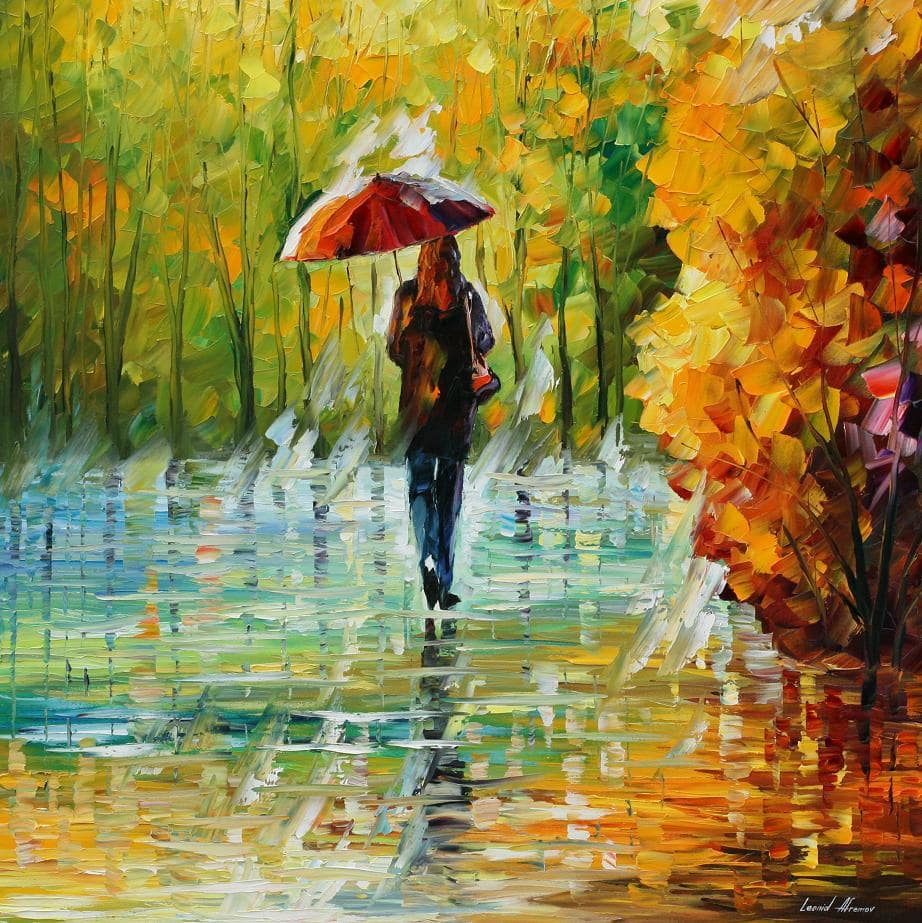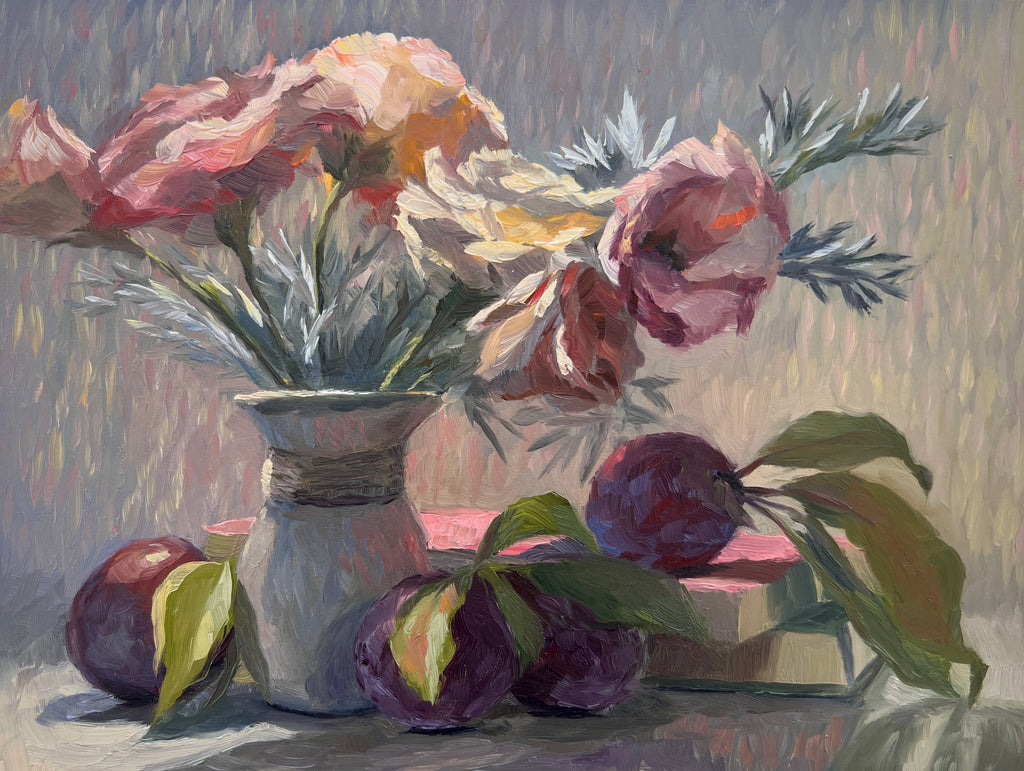Exclusive Valuable Oil Paintings for Sale
Exclusive Valuable Oil Paintings for Sale
Blog Article
Checking out All Regarding Oil Paintings: An Overview to Comprehending Their Charm and Value
Oil paintings have astounded audiences for centuries, providing a peek into the artistic mastery of numerous ages. Their rich background is linked with cutting-edge methods and extensive emotional expression. Comprehending the products and methods behind these artworks can enhance gratitude. In addition, the market for oil paintings offers chances for investors and collectors alike. As one discovers this interesting globe, the concern arises: what makes an oil paint really valuable?
The Background of Oil Paint: A Journey Via Time
Although oil painting has origins that go back to ancient times, it genuinely flourished throughout the Renaissance, when artists uncovered its adaptability and rich shade potential. Early instances can be traced to the 7th century, with methods developing significantly throughout cultures. The tool became famous in Northern Europe in the 15th century, particularly with the jobs of artists like Jan van Eyck, who originated its use for in-depth realistic look and dynamic colors. This period marked a separation from tempera paints, allowing for better depth and texture. As oil painting spread, it affected plenty of artists, causing work of arts by popular numbers such as Leonardo da Vinci and Rembrandt. The tool's legacy proceeds, forming the art globe well into contemporary times.
Recognizing Oil Repaints: Materials and Techniques
As artists check out the world of oil paints, they run into a diverse range of materials and methods that specify this tool. The key components of oil paint include pigments, which offer color, and drying oils, such as linseed, that bind the pigments and assist in application. Different ingredients can change the paint's appearance and drying out time, enhancing adaptability. Strategies like glazing, where clear layers are built up, and impasto, which includes using thick paint, permit for various aesthetic results. Furthermore, making use of brushes, scheme blades, and also fingers can produce special appearances and coatings. Understanding these techniques and products makes it possible for musicians to totally share their creative thinking and accomplish the preferred effect in their artwork.
The Role of Shade in Oil Paints
Color plays a pivotal duty in oil paintings, influencing both aesthetic charm and emotional vibration. Comprehending color concept essentials, including the partnerships in between tones, can enhance an artist's capacity to communicate mood and ambience. Additionally, understanding shade mixing techniques permits higher deepness and splendor in a paint's scheme.

Color Concept Basics
Understanding color concept is essential for artists dealing with oil paints, as it develops the structure for developing aesthetically engaging and harmonious structures. Color concept incorporates the research study of just how shades communicate, the shade wheel, and the relationships in between primary, second, and tertiary shades. Artists utilize complementary shades to enhance contrasts and develop focal points, while comparable colors advertise unity and cohesiveness within an item. In addition, the concepts of cozy and amazing shades affect the assumption of depth and space in a painting. Realizing these concepts enables artists to manipulate shade effectively, guiding the viewer's eye and connecting their desired message. Proficiency of color theory ultimately enriches an artist's ability to communicate feelings and ideas via their work.
Psychological Influence of Shade
The psychological impact of color in oil paintings plays an essential duty in just how audiences link and regard with artwork. Shades stimulate particular sensations and moods, influencing the visitor's mood. Warm colors like oranges and reds can produce a feeling of warmth and energy, while great tones such as blues and greens commonly stimulate peace or introspection. Artists tactically pick shade palettes to boost narrative elements, directing the audience's psychological trip. The saturation and comparison of shades further enhance these impacts, attracting focus and developing focus. Ultimately, the interplay of colors in oil paints not just boosts their visual allure but also functions as a powerful medium for emotional expression, improving the audience's experience and analysis.
Color Combining Techniques
While numerous elements of oil painting add to the overall make-up, mastering shade mixing methods is essential for attaining wanted impacts and depth. Shade blending can be approached through different methods, including the additive and subtractive procedures. Additive mixing involves incorporating shades of light, while subtractive mixing relies upon pigments, where shades mix to create brand-new tones. Artists often use a minimal scheme to produce unified works, recognizing the connections between key, secondary, and tertiary shades. Methods such as glazing and scumbling even more enhance deepness and brightness. By skillfully blending colors, a musician can stimulate emotions, develop prime focus, and achieve a sense of realistic look, inevitably elevating the painting's emotional and visual impact.
Famous Oil Painters and Their Iconic Works

Famed for their proficiency of color and method, oil painters have produced a few of one of the most renowned art work in background. Popular artists like Vincent van Gogh mesmerized audiences with his emotive brushwork in "Starry Night," while Claude Monet's "Impression, Dawn" laid the groundwork for Impressionism. Leonardo da Vinci's "Mona Lisa" stays an enduring symbol of artistic genius, showcasing his skill in catching human expression. Rembrandt's "The Night Watch" highlights his cutting-edge usage of light and shadow. Other remarkable figures include Pablo Picasso, that revolutionized modern-day art with his vibrant trial and error in works like "Les Demoiselles d'Avignon," and Georgia O'Keeffe, whose dynamic depictions of blossoms and landscapes assisted define American modernism. Each musician's special style added greatly to the oil paint landscape.
Exactly how to Assess the Quality of an Oil Paint
Examining the high quality of an oil paint entails a cautious assessment of workmanship techniques, as well as an analysis of color and structure. Observing brushwork, layering, and the application of paint can expose the artist's skill level. In addition, the interplay of colors and the total arrangement of components add significantly to the paint's aesthetic value.
Evaluating Craftsmanship Methods
A careful assessment of workmanship techniques is essential for establishing the high quality of an oil painting. Critics should initially examine the application of paint; thick, distinctive brushstrokes may recommend an experienced hand, while extremely uniform applications might indicate a lack of deepness. oil paintings for sale. The layering technique is likewise essential; the existence of lusters and varied density can improve luminosity and intricacy. Furthermore, the quality of the products made use of, such as the canvas and pigments, plays a considerable function in durability and general visual. Attention to detail in components like sides and shifts between shades mirrors the musician's commitment to their craft. Inevitably, these techniques add to the painting's psychological influence and market value, functioning as signs of the musician's ability and intent
Analyzing Color and Structure
While assessing the top quality of an oil painting, one have to focus on the interaction of color and structure, as these components are essential to the art work's overall effect. Color selections can establish and stimulate feelings mood; as a result, the artist's combination need to be taken a look at for consistency and contrast. A healthy composition guides the visitor's eye and creates a feeling of unity. Artists frequently utilize techniques like the guideline of thirds or leading lines to improve aesthetic rate of interest. In addition, making use of light and shadow can add deepness, boosting the three-dimensionality of the paint. Eventually, a successful oil paint marries color and structure, engaging the customer and welcoming a deeper gratitude of the artist's vision and method.
Taking care of and Preserving Oil Paintings
Correct treatment and conservation of oil paints is essential for maintaining their integrity and durability. To safeguard these artworks, it is crucial to show them far from straight sunlight, which can trigger fading and discoloration. Keeping a steady environment with regulated temperature level and humidity more help in protecting against damage. Cleaning must be done carefully using a soft, completely dry cloth, staying clear of any type of severe chemicals that might harm the paint or varnish. Regular assessments for indicators of degeneration, such as flaking or cracking, are advisable. When saving or moving oil paints, appropriate padding and framework are needed to prevent physical harm. Inevitably, attentive treatment contributes to get more info the aesthetic charm and value of oil paints gradually.
The Market for Oil Paintings: Accumulating and Investing
Understanding the marketplace characteristics for oil paintings is important for enthusiasts and investors alike. The value of these art work is affected by different variables, consisting of the artist's credibility, historic value, and current patterns. Enthusiasts frequently look for items that resonate personally while thinking about possible appreciation in value. Auctions and galleries work as key venues for purchasing and selling, with prices rising and fall based upon need and rarity. Spending in oil paintings requires research into the market, in addition to an understanding of authenticity and provenance. Additionally, arising artists might use chances for considerable returns, while developed names can regulate high costs. Generally, a critical approach to collecting can yield both aesthetic enjoyment and economic rewards.

Often Asked Questions
What Are the Ecological Impacts of Oil Paint Materials?
The ecological effects of oil paint materials consist of the release of unpredictable organic substances (VOCs), dangerous waste generation, and resource removal for pigments. These elements add to pollution and eco-friendly degradation, elevating issues amongst environmentally mindful artists and consumers.
Just How Do Different Canvases Influence Oil Painting Outcomes?
Various canvases influence oil paint results considerably. Surface, absorbency, and structure high quality can alter paint application, drying times, and shade vibrancy. Musicians usually pick details canvases to accomplish preferred impacts and enhance their artistic expression.
Can Oil Paintings Be Recovered if Harmed?
If harmed, Oil paintings can indeed be restored. Specialist conservators make use of numerous methods to fix tears, clean surfaces, and address discoloration, making certain that the artwork preserves its original charm and value for future generations.
What Are the Indications of an Initial Oil Paint?
The indications of an original oil paint include noticeable brush strokes, structure variations, and an irregular canvas weave (oil paintings for sale). Furthermore, credibility may be verified through provenance, trademarks, and the presence of a varnish layer one-of-a-kind to oil mediums
How Has Innovation Influenced Modern Oil Painting Techniques?
Modern technology has actually substantially affected contemporary oil painting methods by presenting digital devices for planning, boosted products for structure and durability, and on the internet platforms for offering and sharing art, thereby broadening artists' creative possibilities and audience get to. Oil painting has roots that date back to old times, it really prospered during the Renaissance, when musicians uncovered its flexibility and abundant color capacity. The psychological impact of color in oil paints plays a vital role in exactly how visitors perceive and link with artwork. While numerous facets of oil paint contribute to the overall structure, mastering color blending strategies is important for accomplishing wanted effects and depth. Reviewing the quality of an oil painting includes a mindful analysis of craftsmanship methods, as well as an evaluation of shade and composition. While examining the top quality of an oil paint, one must focus on the interplay of color and structure, as these aspects are basic to the artwork's overall effect.
Report this page